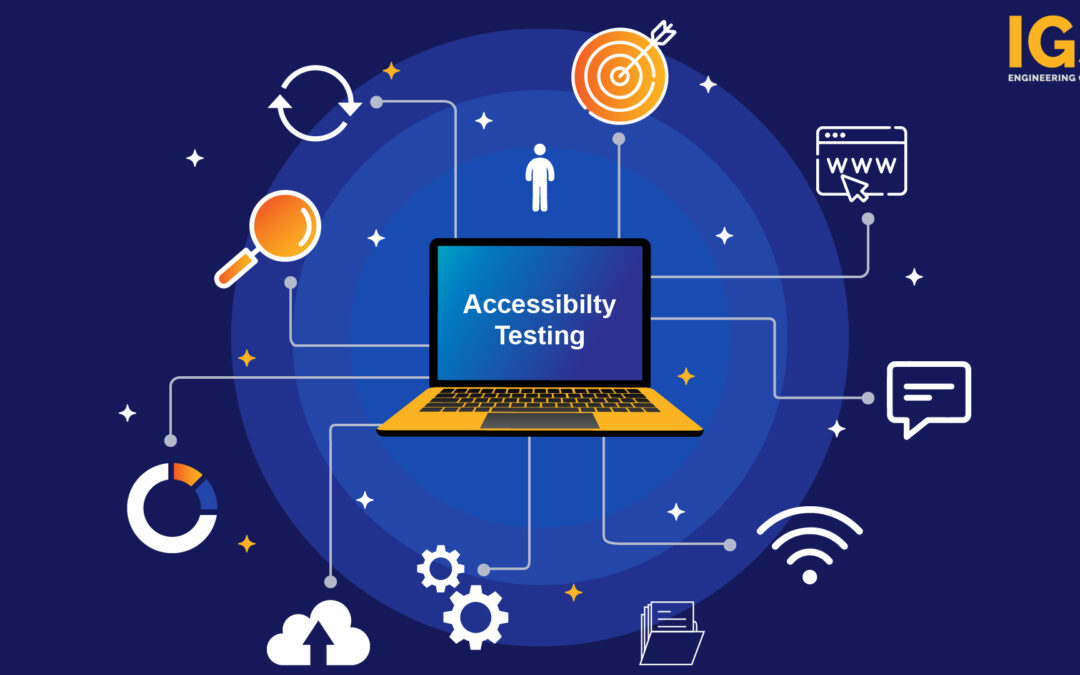
OTT Testing: Meaning, Key Challenges and Solutions
OTT Testing: Meaning, Key Challenges and Solutions
The on-demand entertainment revolution has swept the globe, with Over-the-Top (OTT) platforms like Netflix, Hulu, and Disney+ becoming household names. But behind the scenes, meticulous testing is the unsung hero ensuring a smooth, buffer-free viewing experience for millions. This blog delves into the intricate world of OTT testing, exploring its significance, potential roadblocks, and best practices for overcoming them.
What is OTT Testing?
Imagine a world where your favorite movie stutters, pixelates, or throws an error message just as the climax unfolds. OTT testing strives to prevent such nightmares by meticulously evaluating the performance, functionality, and compatibility of OTT platforms across various devices, networks, and browsers. This multi-faceted approach ensures:
- Flawless video playback: No more buffering interruptions or frustrating resolution drops.
- Responsive user interface: Effortless navigation, intuitive controls, and lightning-fast search functionality.
- Rock-solid platform stability: Enjoy uninterrupted streaming sessions without unexpected crashes or errors.
Key aspects of OTT testing include:
- Functionality testing: Verifying core features like search, playback controls, personalized recommendations, and secure account management.
- Performance benchmarking: Analyzing video quality, bitrate adaptation, buffering times, and loading speeds under varying network conditions.
- Compatibility testing: Guaranteeing seamless operation across diverse devices, operating systems, and browsers, from high-end smart TVs to budget smartphones.
- Security testing: Identifying and plugging vulnerabilities to safeguard user data and copyrighted content.
Importance of OTT Testing:
In the age of cord-cutting and endless content discovery, Over-the-Top (OTT) platforms have become the go-to source for entertainment. From blockbuster movies to live sports, viewers demand a flawless, uninterrupted experience. This is where the often-invisible hero, OTT testing, steps in. It’s the meticulous process that ensures your platform delivers the magic, not the frustration.
But Why is OTT testing so critical? It goes far beyond just making sure the video plays. It’s about crafting an experience that keeps viewers glued to their screens, episode after episode, season after season. Let’s delve into the key components that make OTT testing mission-critical:
Your Streaming Arsenal:
- Device Diversity: From smartphones and tablets to smart TVs and game consoles, ensure flawless playback across a vast array of devices and operating systems. Don’t forget the edge cases – older browsers and mobile versions need to be included in your testing repertoire to avoid alienating a segment of your potential audience.
- Quality Matters: Video and audio quality are paramount. Assess different resolutions, bitrates, and codecs to guarantee a crisp visual experience and immersive sound, regardless of the viewer’s device or network constraints. Remember, pixelated nightmares and distorted audio are surefire ways to drive viewers away.
- Performance Under Pressure: Minimize buffering, reduce latency, and ensure your platform doesn’t buckle under peak loads. Imagine the frustration of a buffering championship game or the agony of a delayed live concert – these scenarios can damage your brand reputation and lose you viewers.
- Security Shield: Protect your valuable content from piracy with robust security measures. Implement encryption, access controls, and other safeguards to ensure only authorized users can access your content. Remember, user data privacy is equally important. Gaining and maintaining user trust requires comprehensive data protection strategies.
- Delivery Dynamics: Partner with Content Delivery Networks (CDNs) and test how efficiently content reaches viewers across the globe. No matter their location or network conditions, a smooth, uninterrupted stream is key.
- Beyond the Play Button: User interface, search functionality, and overall user experience (UX) go beyond just playing the video. Test across all platforms to ensure intuitive navigation, efficient search, and a seamless journey for viewers, regardless of their technical expertise.
- Feature Focus: Recommendations, watchlists, integrations – make sure everything works flawlessly, adding value and personalization to the viewing experience. Imagine suggesting the perfect next show or seamlessly integrating social media features – these can significantly enhance viewer engagement.
The Rewards of Rigorous Testing:
- Happy Viewers, Happy Business: A flawless experience translates to loyal users, positive reviews, and a thriving platform. Satisfied viewers become brand advocates, driving organic growth and boosting your bottom line.
- Cost-Effective Quality: Catching bugs early saves time, resources, and money compared to fixing issues post-launch. Imagine the cost of fixing a major security breach or resolving widespread compatibility issues – thorough testing is a proactive and cost-effective investment.
- Fort Knox for Content: Robust security measures protect your content and user data, building trust and confidence with your audience. Data breaches and content leaks can have devastating consequences, both financially and reputationally.
- Reaching New Shores: Compatibility across devices and platforms expands your audience, opening doors to new markets and demographics. Don’t limit yourself by neglecting certain devices or operating systems – the wider your reach, the greater your potential for success.
- Standing Out from the Crowd: A reliable, high-quality platform sets you apart in the competitive streaming landscape. With so many options available, viewers have choices. Offering a superior experience positions you as the leader in the pack, attracting and retaining viewers in the long run.
- Revenue Growth: UX testing significantly enhances revenue on OTT platforms by ensuring a seamless user experience. Through rigorous testing, platforms can identify and rectify usability issues, optimize onboarding processes, and refine content discovery mechanisms. A positive and frustration-free user experience leads to increased user retention, higher engagement, and improved subscription rates. Additionally, by making the platform more accessible, mobile-responsive, and optimizing ad experiences, OTT providers can attract a broader user base and maximize revenue opportunities. Ultimately, the data-driven insights gained from UX testing enable continuous improvement, ensuring that the platform aligns with user preferences and drives sustained financial success
Remember, Viewers have options. By investing in thorough OTT testing, you’re crafting an experience that keeps them coming back for more. It’s the secret weapon that unlocks streaming success, ensuring your platform owns the stream, not the other way around. Don’t underestimate the power of rigorous testing
How to Conduct OTT Testing?
The journey to a flawless OTT experience starts with a well-defined roadmap. Here’s a step-by-step guide:
- Define objectives and scope: Clearly outline what needs testing, prioritizing core features and functionalities.
- Choose the right tools: Select specialized tools equipped for OTT platforms and diverse device compatibility. Popular options include cloud-based testing platforms, automated testing frameworks, and network emulators.
- Craft comprehensive test cases: Cover the functional, performance, and compatibility aspects you defined in step Create a mix of positive and negative test cases to comprehensively evaluate the platform.
- Execute manual and automated testing: Combine the strengths of both approaches. Manual testing allows for exploratory discovery of issues, while automated testing efficiently executes repetitive tasks.
- Analyze results and fix issues: Meticulously analyze test results, identify bugs and performance bottlenecks, and promptly address them before launch.
Conquering the Stream: Challenges and Best Practices in OTT Testing
The Over-the-Top (OTT) revolution has transformed how we consume entertainment, replacing bulky cable boxes with sleek streaming experiences. But behind the seamless flow of movies and shows lies a complex world of testing, ensuring quality and a smooth user experience across diverse devices and networks. While exciting, OTT testing comes with its own set of unique challenges that testers must navigate. Let’s delve into the common obstacles and explore strategies to overcome them:
Device Diversity: A Labyrinth of Screens
Gone are the days of one-size-fits-all TV screens. Today, audiences access OTT platforms on a mind-boggling array of devices – smartphones, tablets, smart TVs, gaming consoles, streaming sticks, and more. Each device boasts its own operating system, hardware specifications, and screen size, creating a testing matrix that can quickly become overwhelming.
Challenge: Ensuring consistent functionality and performance across this diverse landscape requires extensive testing on a representative sample of devices. The sheer number and frequent updates can strain resources and timeframes.
Solutions:
- Cloud-based testing platforms: Leverage cloud services that offer access to a wide range of real devices, eliminating the need for physical hardware investments.
- Prioritization: Strategically select devices based on popularity, target demographics, and known compatibility issues.
- Emulators and simulators: While not a perfect substitute, these tools can provide valuable insights into potential issues on a broader range of devices.
Network Nuances: The Fickle Flow of Data
Unlike traditional cable, OTT relies on the internet for content delivery, introducing a new layer of complexity. Network conditions – bandwidth, latency, jitter, and packet loss – can significantly impact playback quality, leading to buffering, freezing, and frustrating user experiences.
Challenge: Simulating real-world network scenarios in a controlled environment is difficult. Testers need to account for various network speeds, stability, and congestion levels.
Solutions:
- Network emulation tools: These tools create realistic network conditions, allowing testers to experience and troubleshoot issues that might arise in different network environments.
- Real-world testing: Conduct testing over various internet connections (Wi-Fi, cellular, wired) to capture the impact of varying network quality.
- Content Delivery Network (CDN) monitoring: Integrate monitoring tools to track CDN performance and identify potential bottlenecks.
Content Conundrums: More Than Meets the Eye
OTT platforms deliver a variety of content types – live streams, pre-recorded videos, interactive elements, and even downloadable content. Each type presents unique testing challenges, requiring careful attention to encoding formats, bitrates, DRM (Digital Rights Management) implementation, and content protection measures.
Challenge: Ensuring all content plays seamlessly across devices, browsers, and network conditions while adhering to security and copyright regulations, demands meticulous testing.
Solutions:
- Format and codec testing: Verify compatibility with various video and audio codecs across different devices and platforms.
- DRM testing: Validate the proper implementation of DRM mechanisms to ensure secure content delivery and prevent unauthorized access.
- Accessibility testing: Guarantee that content is accessible to users with disabilities, adhering to relevant guidelines and regulations.
Performance Under Pressure: When the Crowd Tunes In
Live events and popular releases can attract massive audiences, putting immense pressure on OTT platforms. Scalability and performance become paramount to avoid service disruptions and user churn.
Challenge: Simulating high user loads and concurrent streams in a controlled testing environment is crucial, but replicating real-world scenarios can be resource-intensive.
Solutions:
- Load testing tools: Utilize tools that generate simulated user traffic to assess platform stability and performance under peak loads.
- Monitoring and analytics: Implement real-time monitoring to identify and address performance bottlenecks during live events.
- Stress testing: Push the platform beyond expected limits to uncover potential weaknesses and ensure scalability.
Beyond the Basics: The Human Touch
While automation plays a vital role in OTT testing, manual testing remains essential for aspects like usability, user interface (UI) responsiveness, and overall user experience. Testers need to think like users, navigating the platform intuitively and identifying potential pain points.
Challenge: Balancing automation with manual testing requires careful planning and resource allocation.
Solutions:
- Exploratory testing: Encourage testers to freely explore the platform, uncovering unexpected issues and usability concerns.
- Usability testing: Conduct user testing sessions to gather feedback on the platform’s ease of use and overall design.
- A/B testing: Experiment with different UI elements and features to determine what resonates best with users.
Ways to Overcome Challenges
Don’t let these challenges deter you! Here are effective strategies to conquer them:
- Embrace the cloud: Leverage cloud-based testing platforms to enable scalable testing across diverse devices and network configurations, eliminating the need for physical hardware.
- Automate the mundane: Free up valuable resources for complex manual testing scenarios by automating repetitive tasks like compatibility testing and regression testing.
- Prioritize performance: Conduct thorough performance testing early and often to identify and address bottlenecks that might impact video quality or buffering.
- Integrate security early: Don’t wait until the final stages – integrate security testing into the development process to minimize vulnerabilities and ensure data protection.
- Get real user feedback: Conduct usability testing with real users from diverse demographics to gather valuable insights and iterate on the user interface design.
Conclusion: OTT testing plays a crucial role in delivering a high-quality streaming experience. By understanding its importance, challenges, and effective testing methodologies, you can ensure your OTT platform stands out in the competitive landscape.
FAQs:
- What is streaming testing? Streaming testing encompasses a broader range of tests including OTT testing but also applies to live streaming platforms like Twitch or YouTube Live.
- What is OTT automation? It involves using automated tools to execute repetitive test cases, saving time and resources during the testing process.
- What are OTT applications? These are mobile or desktop applications dedicated to accessing specific OTT platforms, like the Netflix app or the Disney+ app




